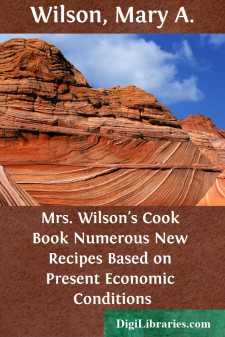Categories
- Antiques & Collectibles 13
- Architecture 36
- Art 48
- Bibles 22
- Biography & Autobiography 813
- Body, Mind & Spirit 142
- Business & Economics 28
- Children's Books 17
- Children's Fiction 14
- Computers 4
- Cooking 94
- Crafts & Hobbies 4
- Drama 346
- Education 46
- Family & Relationships 57
- Fiction 11829
- Games 19
- Gardening 17
- Health & Fitness 34
- History 1377
- House & Home 1
- Humor 147
- Juvenile Fiction 1873
- Juvenile Nonfiction 202
- Language Arts & Disciplines 88
- Law 16
- Literary Collections 686
- Literary Criticism 179
- Mathematics 13
- Medical 41
- Music 40
- Nature 179
- Non-Classifiable 1768
- Performing Arts 7
- Periodicals 1453
- Philosophy 64
- Photography 2
- Poetry 896
- Political Science 203
- Psychology 42
- Reference 154
- Religion 513
- Science 126
- Self-Help 84
- Social Science 81
- Sports & Recreation 34
- Study Aids 3
- Technology & Engineering 59
- Transportation 23
- Travel 463
- True Crime 29
Our website is made possible by displaying online advertisements to our visitors.
Please consider supporting us by disabling your ad blocker.
Mrs. Wilson's Cook Book Numerous New Recipes Based on Present Economic Conditions
by: Mary A. Wilson
Description:
Excerpt
MRS. WILSON'S COOK BOOK
Bread, the staff of life, must be palatable and good if we are to be satisfied with it when we eat.
Can you think of anything that will spoil a meal more quickly than poor, over moist, doughy or heavy bread?
Bread may truly be called the staff of life, as it will maintain life longer than any other single food.
Yet many women think bread-making is a simple task; that the ingredients can be thrown together helter-skelter and good results obtained; or that any kind of flour will make good bread. This is a great mistake. To make good palatable bread it requires good materials, a reasonable amount of care and attention. But first of all must come the knowledge of the flour.
A good blend of hard winter flour is necessary and it can easily be tested by pressing a small quantity of it in the hand; if the flour is good, it will retain the shape of the hand. Graham or whole wheat flour and rye flours can be used for variety and to advantage in making bread.
Other cereal flours do not contain gluten to allow them to be used alone for making the yeast-raised breads. Keep this in mind and thus prevent failures. The yeast is a single-cell plant and must be given the proper temperature, moisture and food for its successful growth. When this is supplied, each little cell multiples a thousand times, thus pushing and stretching the dough. This makes it rise or become light.
WHY DOUGH FALLS
When the yeast cells have absorbed or consumed all the food that they can obtain from the sugar, flour, etc., the dough will recede or fall. Now, if the dough is carefully handled at a given time, this will not take place, and so for this reason the dough is permitted to stand only for a given length of time before it is worked and then placed in the pans.
Few utensils will be required for making bread, but they must be scrupulously clean, if the bread is to have a good flavor. Potatoes and other cooked cereals may be used with good results. Compressed yeast will give the best results, and either the sponge or straight dough method may be used.
Bread made by the sponge method will require a longer time to make than the bread that is made by the straight dough method. Sponge dough consists of setting the sponge and letting it rise until it drops back, usually in two and one-half hours, and then adding sufficient flour to make a dough that can easily be handled.
The straight dough method consists of making a dough at the start. To make bread successfully, do not set the dough over the range, do not set it on the radiators and do not place it where it will be in a draft, to rise. Cold chills the dough and retards the yeast. Yeast grows successfully only in a warm moist temperature from 80 to 85 degrees Fahrenheit.
DOUGH BOX
I would like to tell the housewife about a dough box that I have found to work very successfully. The baker's success in making bread is founded on the fact that he can regulate the temperature of his shop and thus prevent drafts from chilling the dough. This box is just an ordinary cracker box with the lid hinged on it....


